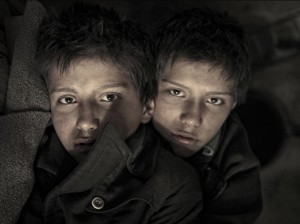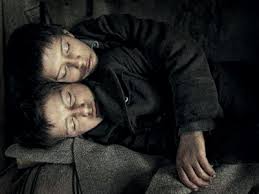 As a reviewer, it is my responsibility to judge a film on its own merits, even if I’m disinclined to its genre. I admit it, though: When faced with the prospect of yet another film about the Holocaust, it’s hard to suppress a groan. It’s not that I’m immune to the unspeakable horrors of that chapter in human history; if anything, as the descendant of Polish Jews, I’m especially sensitive to them. But sitting through films on the topic has become miserable, especially because, well, there are just so many of them. Fair or not, at this point I expect a Holocaust movie to shed new insight in order to legitimize its existence.
As a reviewer, it is my responsibility to judge a film on its own merits, even if I’m disinclined to its genre. I admit it, though: When faced with the prospect of yet another film about the Holocaust, it’s hard to suppress a groan. It’s not that I’m immune to the unspeakable horrors of that chapter in human history; if anything, as the descendant of Polish Jews, I’m especially sensitive to them. But sitting through films on the topic has become miserable, especially because, well, there are just so many of them. Fair or not, at this point I expect a Holocaust movie to shed new insight in order to legitimize its existence.
The good news is that “The Notebook,” adapted from Agota Kristof’s 1986 bestseller Le Grand Cahier, does. It also, it should be noted, is about as far we’re ever going to get from the 2004 Ryan Gosling-Rachel McAdams weepie that shares its name. Set in 1944 Hungary, this “Notebook” frames the evil revealed by the region’s Nazi Occupation as the most treacherous of fairy tales: one that realizes our childhood fear that there really are no trustworthy grownups.
It begins as an unnamed mother deposits her unnamed thirteen-year-old twins (László and András Gyémánt) on the doorstep of her estranged mother’s village home and then takes off. The Witch – as the twins’ grandmother is called by all – is a towering molehill of unquenchable rage: red-faced, paranoid, wide as she is tall, frequently drunk, savagely greedy, and verbally and physically violent. Upon encountering the boys, she swats their heads, calls them bastards, and locks them outside for a full day and night before feeding them each a small bowl of watery gruel and banishing them to her attic. It is there that they cower whenever not toiling on her land – which, naturally, borders a frightening forest as well as the land of a female thief known by all as “Hairlip,” due to her disfigurement. (Apparently this world is too harsh for the creature comforts imparted by Christian names.)
All the elements of a parable are thereby in place, and the film’s visuals take their cues accordingly. The twins peek through half-shut doors and around corners; golden light spills through dirty windows and slatted wood; and jagged shadows loom everywhere. The occasional outdoor vista – all saturated, bright color and blooming fields – whispers of an abundance for which everyone here longs.
The boys themselves are wonders (as are the actors portraying them). Left to their own devices, they continue their studies using their father’s Bible as a guide, and resolve to write their story as it occurs. Their one rule: to tell the truth, with no emotional subjectivity. As they experience Nazi atrocities and the cruelty of ordinary townspeople, then, the notebook in which they record their travails becomes a terrifying fairy tale unto itself. Soon enough, they reject their Biblical lessons – especially the Ten Commandments – as ill-afforded luxuries, and the journal develops into a codebook designed to ensure their mental, physical, and spiritual survival. Its prevailing principle is that the best offense is a good defense, and it dictates that the boys train themselves to withstand abuse of all forms so that they may eventually beat the master with his (and her) own tools.
These Brothers Grim are as eerily united in their vigilance as Kubrick’s twin girls in “The Shining.” They move in unison, peer in unison, even seemingly plot in unison. In one scene, they deliberately starve themselves; in another, they wordlessly beat each other senseless. (An observing Nazi soldier chillingly praises them as “great.”) Finally, when they deem themselves ready, the boys begin to prey upon their oppressors, beginning with the Witch and moving on to a nefarious priest and an anti-Semitic, sexually depraved neighbor; nothing and no one is off limits in their quest for vengeance. Yet as tough as they are, the twins still hold hands when grappling with emotional distress. They sleep that way, too.
They remain boys, in other words, and that’s what makes this story all the more resonant. As they reach the end of their youth chronologically – their story grows increasingly brutal, at perhaps too great a length – we realize what director János Szász may have been suggesting all along. The most terrifying evil of all also may be the most commonplace: the broken manchildren who walk among us.
This review was originally published in Word and Film.
